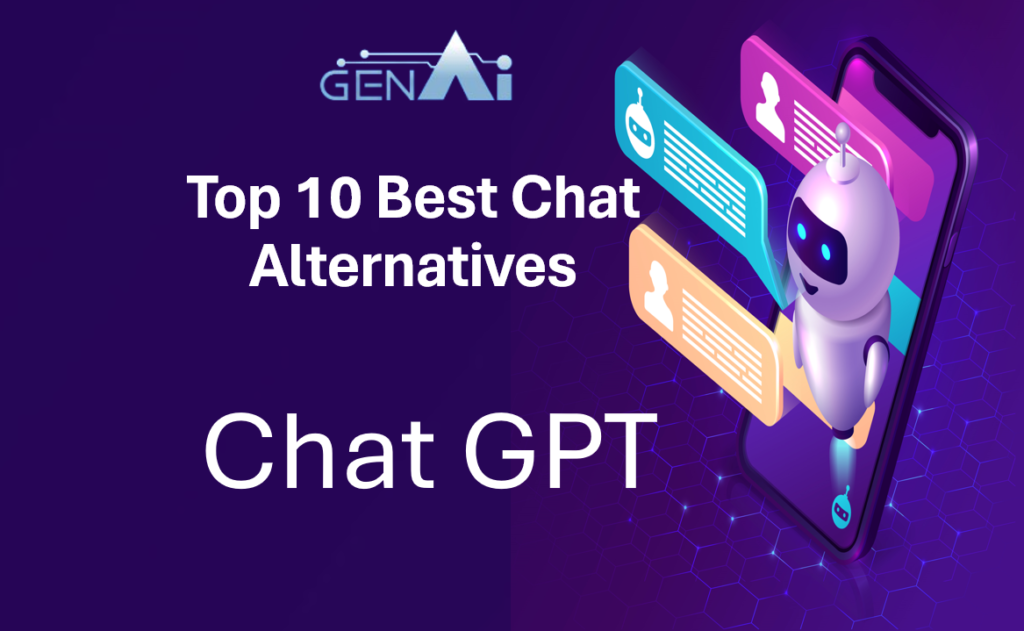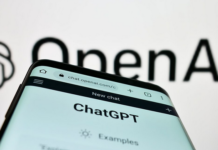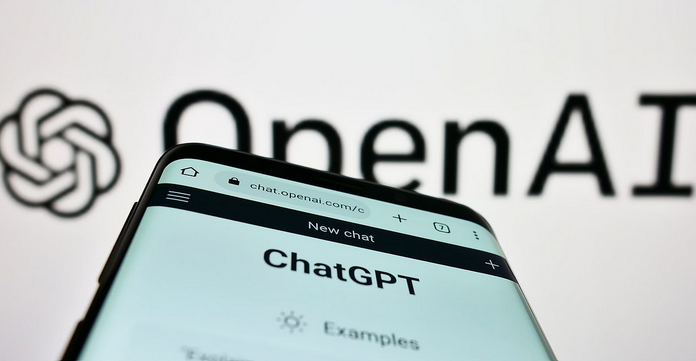Table of Content – Quick Click Links
Chat GPT Alternatives
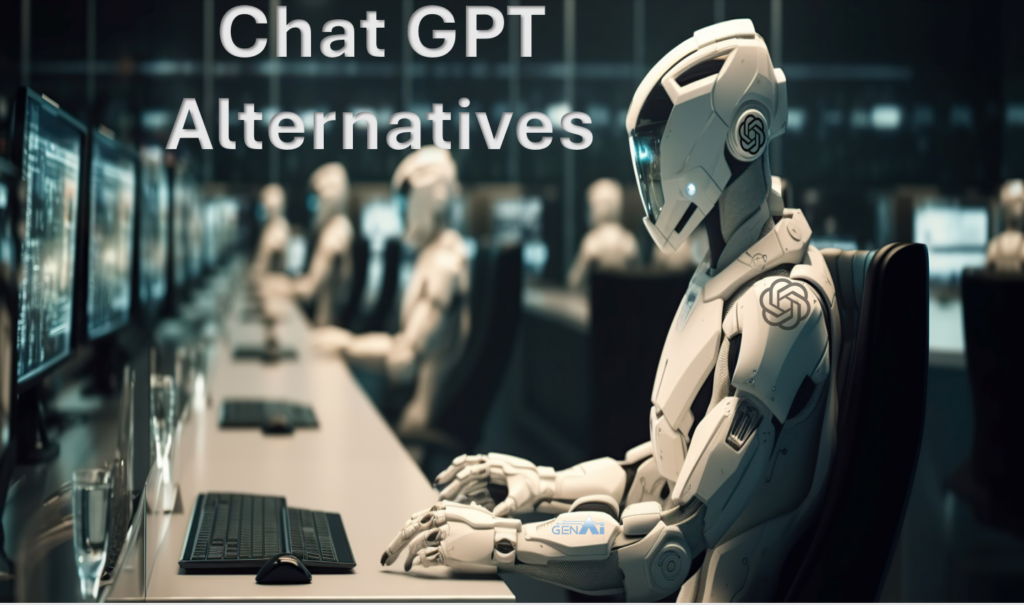
Top 10 – Best Chat GPT Alternatives
The meteoric rise of ChatGPT on the internet is unmistakable. Powered by OpenAI’s advanced GPT-3.5 and GPT-4 language models, this chatbot enables seamless conversations with artificial intelligence. Its recent upgrades, including the ability to process images and even vocalise responses, have elevated its appeal even further. However, this surge in popularity has brought about a significant challenge: ChatGPT’s servers are struggling to cope with the influx of users, resulting in frequent outages and disruptions. For those who rely on ChatGPT’s assistance, these downtimes can be frustrating and inconvenient. Fortunately, there are several alternative options available in 2024 for users seeking reliable AI chatbot services. All these types of AI services essentially fall under the banner of ‘Generation AI’. Here are the best ChatGPT alternatives.
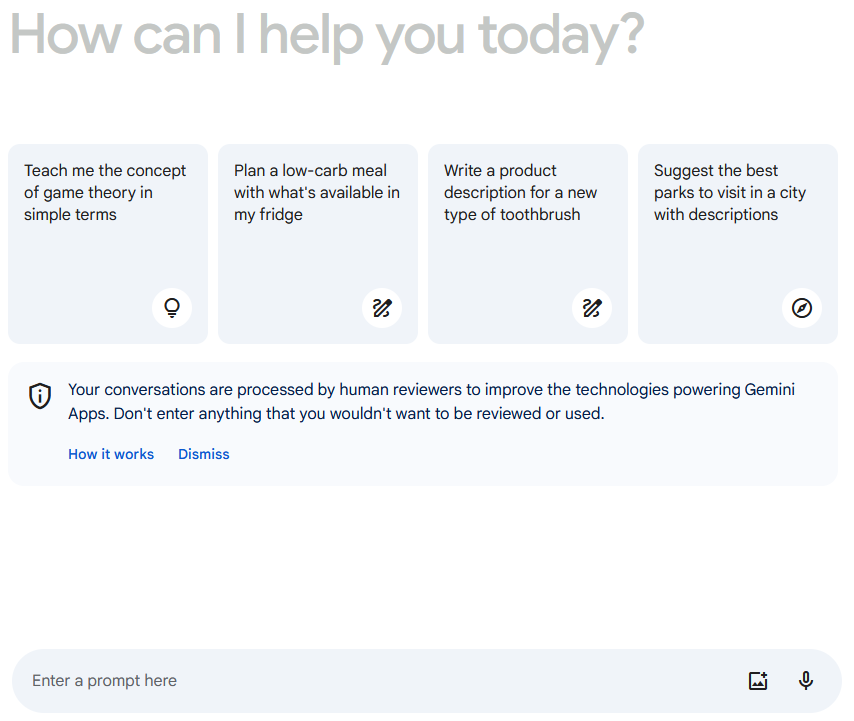
As the AI chatbot landscape continues to evolve, Google has emerged with a compelling contender to challenge ChatGPT’s dominance – Gemini, formerly known as Bard AI. Google Gemini is easily one of the most powerful and widely used alternatives that don’t rely on OpenAI’s GPT language model. Aptly named, this AI chatbot draws its power from Google’s proprietary Gemini family of large language models, a departure from the underperforming PaLM 2.
While Gemini shares architectural similarities with GPT at the core, there is a noticeable difference in the practical capabilities of the two language models. Nonetheless, Google remains steadfast in its commitment to enhancing Gemini’s abilities to be on par with ChatGPT. Recently, the chatbot has been supercharged with new features, enabling it to generate stunning AI images, just as ChatGPT currently does.
Although Gemini demonstrates considerable prowess, ChatGPT enjoys the advantage of being powered by a model that has undergone several iterations of qualitative improvement. While one could argue that Google’s rebranded Gemini has gone through a similar pipeline of quality-focused development, it hasn’t matched the pace and depth of ChatGPT’s evolutionary journey.
However, Gemini has improved massively since its early days, now boasting impressive abilities, including experimental audio and video processing capabilities that could potentially be a game-changer when fully rolled out. It serves as a versatile tool for crafting various forms of content, from articles to emails, and has commendable mathematical abilities. Gemini is also a useful programming aid and an effective tool for language learning endeavours.
Ever since ChatGPT went viral, users had their eyes on Google’s response. Now, Google finally has a family of worthy AI models called Gemini that can compete with ChatGPT’s best offerings. Gemini, which was earlier known as Bard, is currently powered by the Gemini 1.0 Pro model. For those seeking the most capable version, Google offers Gemini Advanced (similar to ChatGPT Plus), powered by the Gemini 1.0 Ultra model, with a two-month free trial and Google One benefits.
Comparisons between Gemini Ultra and OpenAI’s GPT-4 model have revealed that Gemini Ultra excels at creative writing and is a great tool for research due to its Google Search integration. While it falls behind GPT-4 in commonsense reasoning, the free version of Gemini is plenty powerful, and in some cases, it outperforms the free version of ChatGPT (powered by GPT-3.5). Additionally, Gemini supports image analysis, a feature not offered under ChatGPT’s free tier.
Gemini also offers extension support, allowing users to integrate their Gmail, Drive, Google Docs, and more for personalised responses. Notably, with the YouTube integration, users can ask questions on any YouTube video, providing a unique and valuable capability.
Similar to GPT-4, both Gemini Pro and Gemini Ultra are multimodal models, though this capability has not been fully enabled yet. Google plans to add multimodal features to both the free version of Gemini and Gemini Advanced in the near future.
Furthermore, Gemini now allows users to generate images and run Python code within the interface, but these features are currently exclusive to Gemini Advanced users. Google’s Gemini 1.5 Pro model, built on a sparse MoE architecture like GPT-4, promises even greater power with a remarkable context length of 1 million tokens.
As Gemini continues to evolve, it solidifies its position as a formidable alternative to ChatGPT, offering a unique combination of features and capabilities tailored to meet the diverse needs of users in the ever-expanding AI chatbot landscape.
Want to know more? See our Chat GPT vs Google Gemini article here
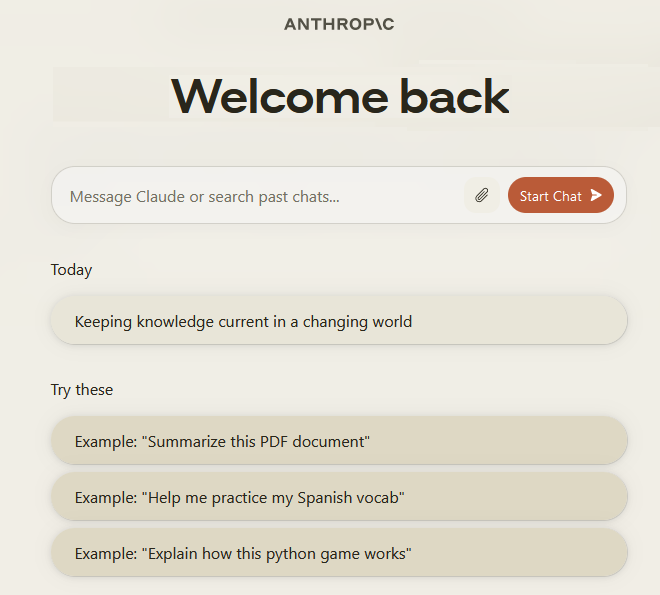
In the ever-evolving realm of artificial intelligence, a newcomer has risen to challenge the dominance of the renowned ChatGPT. Claude AI, though its standing as the premier alternative may be fleeting in this rapidly progressing field, currently stands as the most promising contender in the AI chatbot arena. Finding an AI assistant that matches Claude AI’s proficiency in creativity, rational thinking, and precision is a tall order, making it one of the closest rivals to ChatGPT’s prowess.
How does Claude AI measure up against the mighty ChatGPT? Claude AI surpasses its counterpart in four critical areas while maintaining a strong foothold across several other key benchmarks. It boasts tighter security protocols, a more extensive context window, an updated knowledge repository, and, notably, a superior performance in creative writing tasks.
As an emerging force in the AI chatbot landscape, with continued refinement, Claude AI might attain true parity with ChatGPT – or perhaps even surpass it in the future. Individuals can explore how to register and commence their journey with Claude AI, delving into its potential firsthand.
In the fiercely competitive AI domain, ChatGPT faces no shortage of challengers vying for recognition. Enter Claude 2.1, an advanced AI chatbot developed by Anthropic, a company backed by Google, positioning it as a direct rival to OpenAI. Departing from traditional language models, Claude doesn’t rely on an LLM model. Instead, it employs a collection of what Anthropic dubs “proprietary AI techniques,” encompassing a neural network, training data, and more, with a focus on natural conversation. This approach aims to render Claude a helpful, harmless, and truthful bot for utilization.
Initially accessible solely through Slack, Claude has now expanded its reach to over 95 countries for free usage. The AI chatbot alone is capable of a wide array of tasks, ranging from casual conversations to composing intricate code, solving puzzles, crafting witty jokes, and beyond. Users can even upload compatible files and instruct Claude to summarise them for ease of comprehension. Furthermore, one of Claude’s standout features is its lightning-fast and effortless response times.
However, it’s crucial to note that Claude 2 cannot access the internet and is constrained by its data repository. Additionally, Claude may occasionally falter with mathematical problems, underscoring the importance of double-checking answers. Nonetheless, users are encouraged to explore Claude AI and experience its capabilities firsthand.
As the AI chatbot realm continues its breakneck evolution, Claude AI emerges as a formidable contender, offering a unique amalgamation of strengths and capabilities that position it as a worthy alternative to ChatGPT. With its emphasis on natural conversation, stringent security protocols, and impressive performance in creative writing endeavours, Claude AI is undoubtedly a name to monitor in the ever-expanding artificial intelligence landscape.
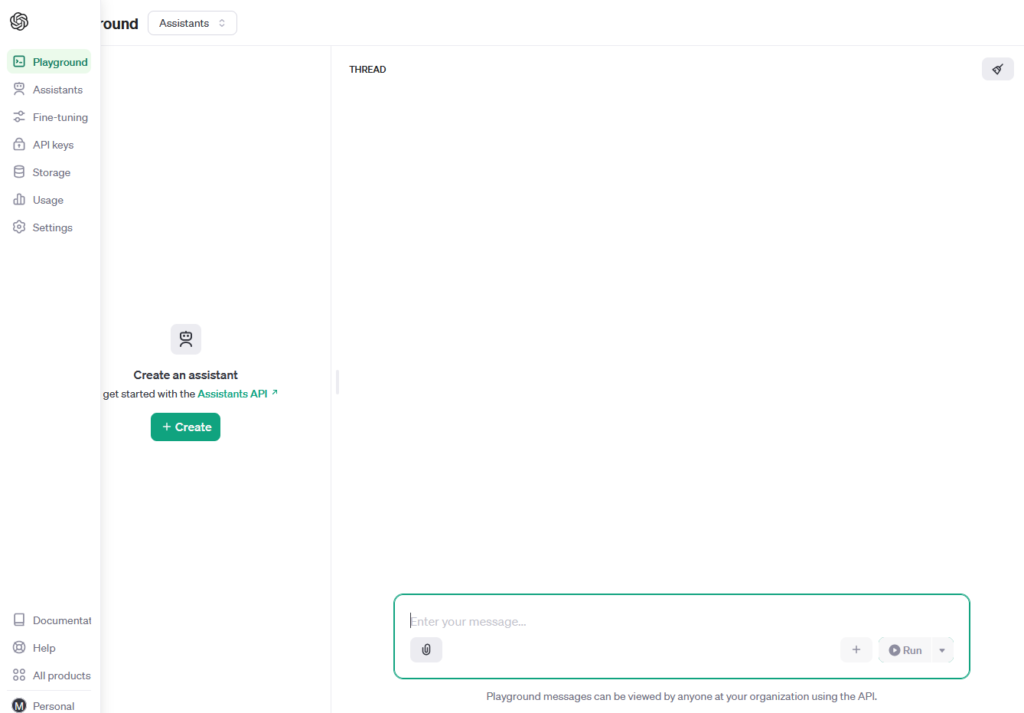
While ChatGPT has garnered widespread acclaim for its conversational AI capabilities, OpenAI has provided a powerful avenue for exploring the full potential of their language models through the GPT Playground. This web-based tool, although less known than ChatGPT, serves as a playground for advanced users and researchers, enabling them to delve into the forefront of OpenAI’s AI technology.
Designed for those inclined towards pushing the limits of language models rather than everyday use, the GPT Playground offers an intriguing alternative, particularly when faced with temporary access restrictions to ChatGPT. It stands out for its feature that allows users to select and experiment with specific language models, including the latest GPT-4 architecture, a perk usually reserved for ChatGPT Plus subscribers.
Unlike ChatGPT’s simplified interface, the Playground provides an array of advanced options, allowing users to fine-tune parameters such as randomness, token limits, frequency penalties, stop sequences, and more. While ChatGPT’s responses are carefully curated, the Playground’s outputs offer an unfiltered glimpse into the raw capabilities of OpenAI’s language models, albeit with occasional touches on sensitive topics that ChatGPT avoids.
In addition to text-based interactions, the Playground supports speech-to-text inputs and enables users to upload audio recordings, facilitating multifaceted exploration. Moreover, it maintains a fluid, lag-free experience, unlike some AI chatbots that struggle with real-time responsiveness.
Access to the GPT Playground is free with an OpenAI account, but it may experience temporary unavailability during peak demand periods, akin to ChatGPT. Overall, the Playground serves as a robust platform for researchers, developers, and AI enthusiasts to push language model boundaries, offering insight into the future of AI technology and showcasing OpenAI’s commitment to advancement. While ChatGPT captures the public imagination with its user-friendly interface, the Playground stands as a testament to OpenAI’s dedication to pushing the AI frontier, inviting exploration from those at the forefront
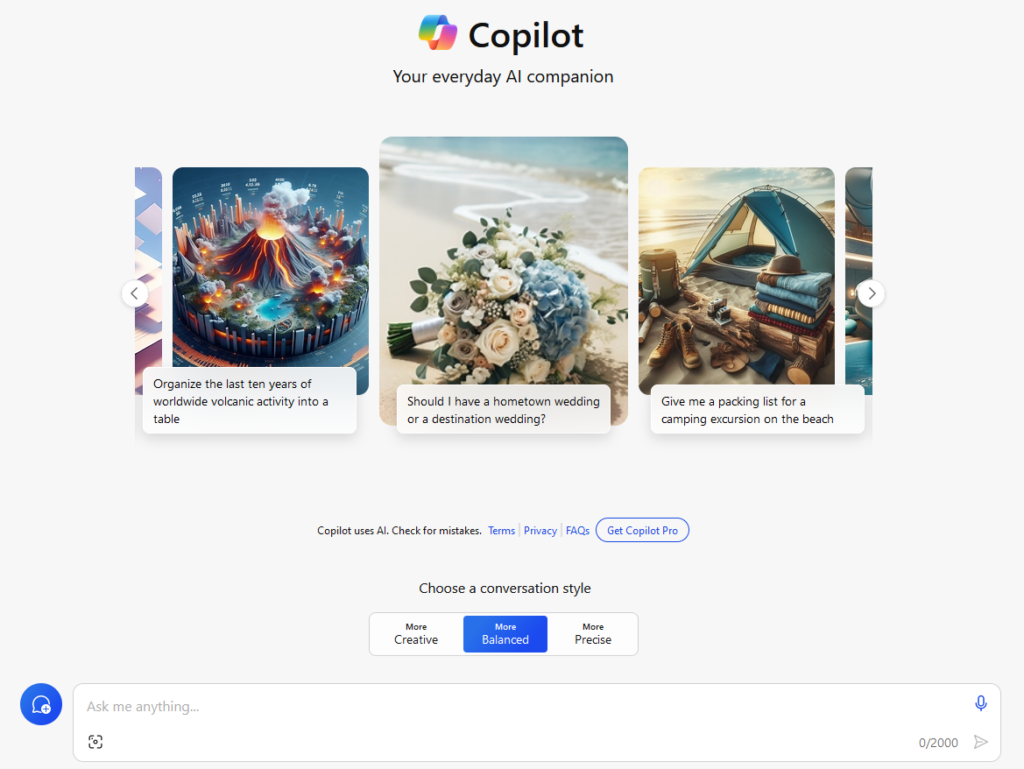
In the highly competitive arena of AI chatbots, Microsoft has unveiled a true contender to challenge ChatGPT’s dominance. Microsoft Copilot, formerly known as Bing AI Chat, stands as one of the finest AI assistants that harness the power of OpenAI’s cutting-edge GPT-4 technology. Copilot seamlessly blends results from the web, OpenAI’s GPT-4 model, and Microsoft’s proprietary technology to deliver factual and up-to-date responses to millions of users worldwide. Akin to ChatGPT, Copilot can also generate stunning images using the DALL-E image generation model, although the quality of images produced by Copilot sometimes seems less appealing than those generated by DALL-E on ChatGPT.
What sets Copilot apart is its intricate tether to the internet, enabling it to provide real-time information about trends and events. This capability ensures that Copilot delivers more relevant responses to prompts “by default” than the conventional ChatGPT.
In addition to leveraging OpenAI’s GPT and DALL-E models, Copilot Chat also benefits from Microsoft’s vast wealth of AI resources, giving it an edge over most other ChatGPT alternatives on the market.
Over its evolution, Microsoft Copilot has undergone a series of transformations and rebranding efforts. This AI companion operates on an enhanced iteration of ChatGPT, originally referred to as the “Prometheus model,” but later unveiled to be none other than GPT-4
Notably, Copilot is the only service currently offering free access to the GPT-4 model. Moreover, Microsoft has announced Copilot Pro, which costs $20 per month but brings priority access to GPT-4 Turbo, GPT-4, and upcoming models from OpenAI. It also allows users to integrate Copilot features seamlessly into Office applications. It’s important to note that free Copilot users will only receive responses from the GPT-4 model during non-peak hours.
Beyond its core capabilities, Copilot is brimming with a plethora of handy AI features that make it an excellent ChatGPT alternative. At its heart lies the Chat mode, which pulls in web queries and enables users to engage in full-scale conversations based on them. Users can fine-tune the bot according to their needs to ensure it responds appropriately.
The AI bot search engine has also added support for a wealth of functionalities, including widgets, chat history, and even multimodal capabilities to help it interpret images accurately.
Furthermore, users can expect increased accuracy and access to the Bing Image Creator. Copilot even allows users to plan trips, seek out recipes, receive personalised advice, and much more, just like ChatGPT. Finally, users can take advantage of a handful of plugins available on Copilot, further enhancing its versatility.
As the competition in the AI chatbot market intensifies, Microsoft Copilot emerges as a formidable force, offering a unique blend of cutting-edge technology, web integration, and a robust feature set that positions it as a worthy rival to ChatGPT’s dominance.
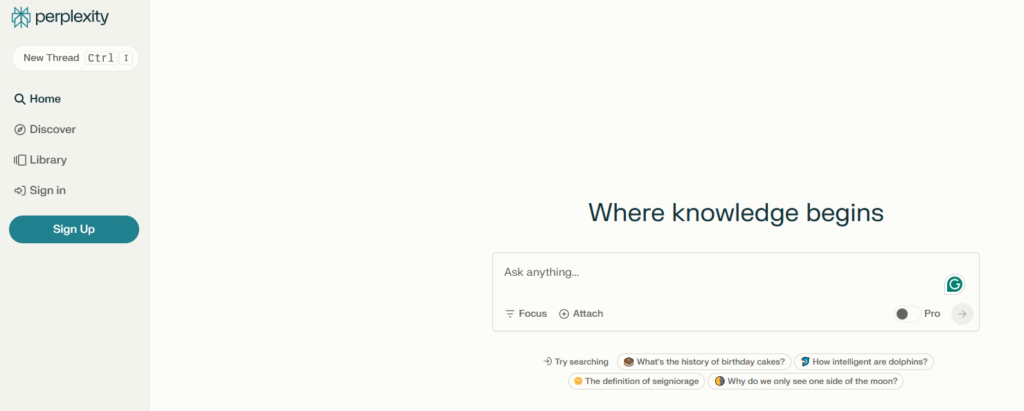
Perplexity AI boasts a fusion of real-time web data synthesis and the prowess of OpenAI’s GPT technology. Setting it apart from other AI chatbots claiming GPT power is its seamless integration of up-to-the-moment internet data with its underlying AI model, ensuring accurate and comprehensive responses.
A standout feature is Perplexity’s meticulous approach to source citation, providing users with transparent information origins and facilitating further research. This commitment to credibility is reinforced by its capacity to blend GPT data with current web-sourced information, keeping responses relevant.
With a tiered experience, the free plan utilises the GPT-3.5 model, while the $20 per month Pro plan unlocks the full potential of GPT-4, promising deeper insights.
For those desiring a blend of search engine functionality and AI-powered assistance, Perplexity AI has gained a loyal following. Trained on OpenAI’s API, it excels at delivering well-researched responses from diverse sources like Reddit, YouTube, and more.
Its “co-pilot mode” leverages GPT-4 to provide meticulously crafted answers, offering a glimpse into AI-powered research’s future. While limited to free users, it showcases the potential of AI-driven exploration.
User experiences are consistently positive, with fast, error-free responses whether engaging casually or seeking depth. The recent addition of multimodal capabilities enhances user experience, exclusive to Pro subscribers.
As the AI landscape evolves, Perplexity AI innovates by blending AI technology with human knowledge. With unique features, accuracy, and user-centric design, it emerges as a reliable ChatGPT alternative.
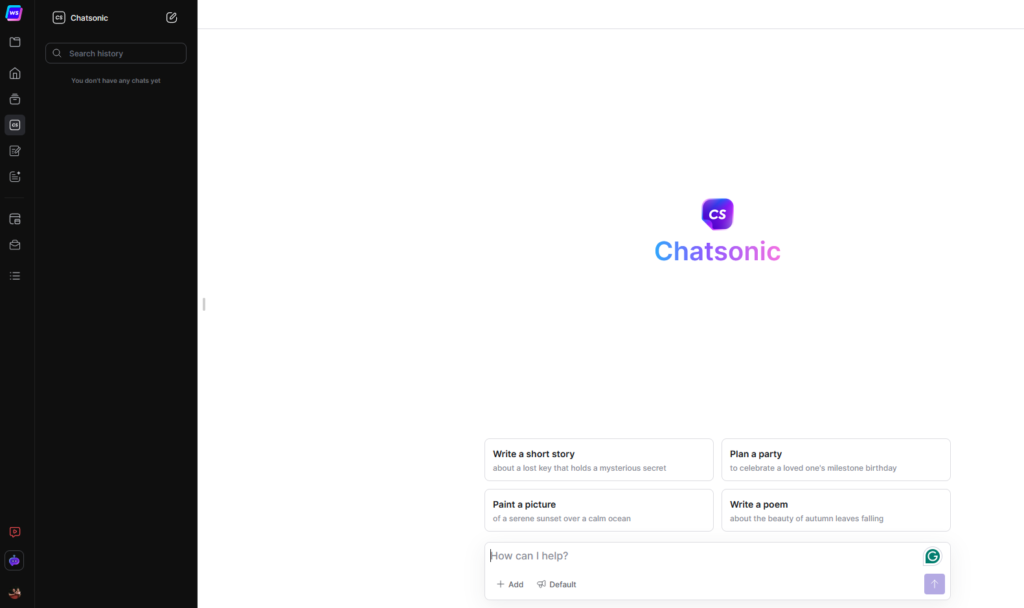
Chatsonic-Home-Screen
Chatsonic has emerged as a compelling alternative to ChatGPT, offering users a wealth of features and capabilities in the realm of AI chatbots. Built on the foundation of ChatGPT, Chatsonic inherits its vast potential and has evolved into a robust platform with numerous enhancements.
Upon its launch, Chatsonic boasted a few features, but it has since been supercharged with additional functionalities that make it a standout choice for users. One of its notable features is its integrated Google search capability, allowing users to quickly access detailed information from the internet and receive accurate answers. The chatbot goes a step further by citing sources for verification, ensuring the reliability of the information provided. Additionally, Chatsonic features a built-in image generator, providing users with quick access to photos, albeit not at the level of quality seen with other platforms like Midjourney.
Chatsonic offers users the flexibility to interact with multiple personas, ranging from an accountant to a poet, catering to diverse conversational preferences. Moreover, it includes a convenient voice recording feature for users who prefer verbal communication over typing. While Chatsonic operates primarily as a paid service, users receive 10,000 free words upon sign-up, with the option to access more through paid plans.
Key features of Chatsonic include the utilisation of the GPT-4 model, image creation, voice command functionality, translation capabilities, character-based chat, and internet access, making it a comprehensive and versatile AI chatbot solution.
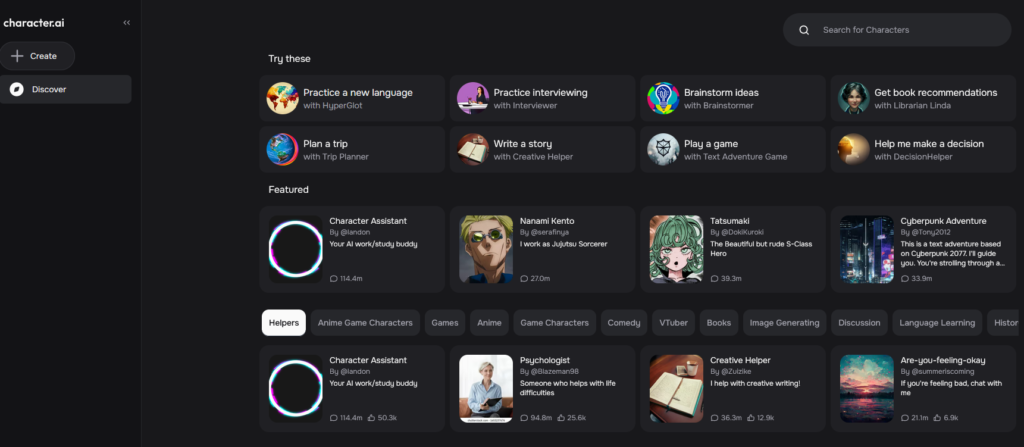
In the realm of conversational AI, Character AI stands out as a distinctive platform offering a specialised and immersive experience. Unlike traditional chatbots like ChatGPT, Character AI takes a novel approach by providing users with AI avatars modelled after public figures, fictional characters, and celebrities.
Character AI’s primary focus revolves around engaging users in conversations tailored to specific characters or figures. Whether it’s interacting with virtual assistants, iconic personalities like the Mario Bros, or even creating custom characters, Character AI offers a diverse range of options for users to engage with. This unique feature sets it apart from conventional chatbots, emphasising entertainment and personalised interactions over broad utility.
Unlike ChatGPT, which relies on the powerful GPT-4 model, Character AI operates on its proprietary neural language model, developed specifically to emulate the speech patterns and mannerisms of different characters. This bespoke approach enhances the authenticity of interactions, allowing users to immerse themselves fully in conversations with their favourite characters.
Another distinguishing aspect of Character AI is its entertainment-focused interface, designed to facilitate engaging and enjoyable interactions. Whether users are seeking witty banter with fictional characters or insightful conversations with historical figures, Character AI provides a platform for imaginative engagement and exploration.
Furthermore, Character AI offers users the flexibility to create and customise their own characters, adding a personal touch to their conversational experiences. This feature enhances user engagement and creativity, allowing individuals to tailor their interactions according to their preferences and interests.
In summary, Character AI offers a unique and captivating experience that sets it apart from traditional chatbots. With its focus on character-themed interactions, personalised conversations, and user customisation, Character AI provides a refreshing alternative in the evolving landscape of conversational AI. As the platform continues to evolve, it promises to redefine the way users interact with AI and explore the boundaries of imagination and creativity.
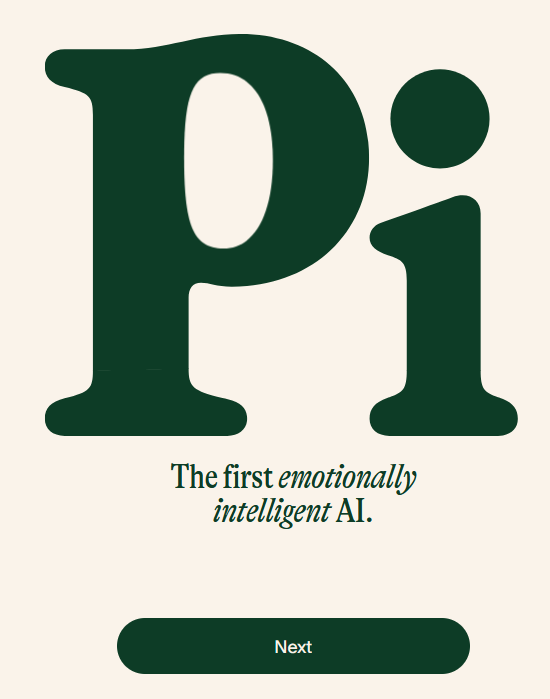
As an AI chat tool, Pi-AI emerges as a truly distinctive option, offering users a fresh and engaging conversational experience. Developed as a supportive and intelligent AI by the creative minds behind Inflection, Pi stands apart with its unique design and approach to interactions.
Unlike traditional chatbots, Pi breaks away from full-blown chats, opting instead for dialogue-by-dialogue conversations. This unique structure adds depth and immersion to each interaction, making the experience feel more personal and dynamic. What’s more, Pi stands out as one of the few assistants that actively participates in conversations, initiating dialogue and responding with insightful and supportive remarks.
Pi’s website features six different voices, each possessing an uncanny realism that adds to the overall experience. From soothing and comforting tones to more lively and energetic voices, Pi’s diverse range of voices adds a layer of authenticity to every interaction.
The chatbot takes on a role akin to that of a therapist, displaying an inquisitive nature and a genuine desire to understand and empathise with users. Despite occasional errors, Pi’s conversational style feels remarkably human, blurring the lines between man and machine.
While prolonged conversations with Pi can become tedious, the chatbot excels in providing mental relief and support, making it an ideal choice for those seeking a therapeutic conversational experience. However, it’s worth noting that signing up for Pi requires an account and a working phone number, which may be a drawback for some users.
In summary, Pi stands out as a refreshing alternative to ChatGPT, offering users a unique and engaging conversational AI experience. With its personalised dialogues, therapist-like demeanour, and immersive interactions, Pi redefines the boundaries of conversational AI, inviting users to explore new realms of interaction and engagement.
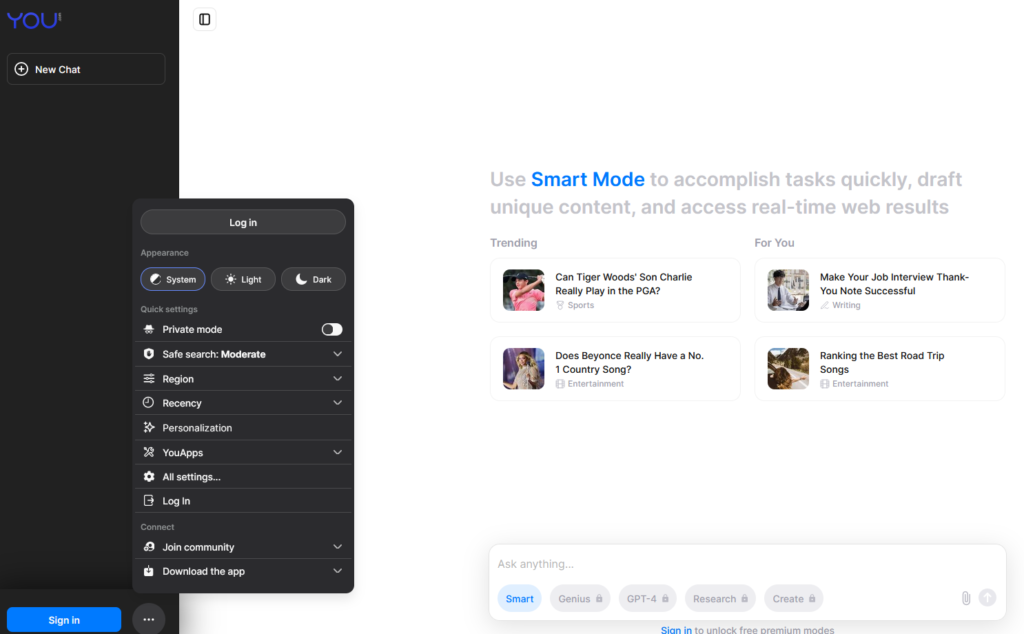
YouChat is a pioneering search engine that revolutionises the way users access information online. Similar to ChatGPT, YouChat harnesses the power of existing Large Language Model (LLM) along with augmented with custom features crafted by You.com to deliver a unique and personalised search experience.
At the heart of YouChat’s functionality lies its conversational approach to search queries, a departure from traditional keyword-based searches. Users engage with YouChat through a chat interface, posing complete questions in a manner that’s similar to conversing with a human. The response is seamlessly integrated into the chat conversation, eliminating the need to navigate to external websites or sift through extensive text to find answers.
This groundbreaking feature epitomises YouChat’s mission—to summarise vast amounts of data and websites to provide users with concise, detailed responses to their inquiries. Unlike conventional search engines that require users to gather and synthesise information themselves, YouChat streamlines the process by delivering curated answers quickly and facilitating follow-up questions that maintain contextual relevance.
While YouChat shares similarities with ChatGPT, it boasts unique technology and content, not overly different to the distinction between Google and Yahoo in the search engine realm. Powered by You.com’s cutting-edge AI, YouChat represents a paradigm shift in online search, offering an efficient and intuitive method of accessing information.
You.com have clearly developed YouChat as a forward-thinking search engine (founded by former Salesforce employees). YouChat is part of a suite of AI-powered tools designed to enhance user experiences and prioritise privacy. In addition to YouChat, You.com offers a range of tools including YouWrite for writing assistance, YouCode for generating computer code, and YouImagine for image generation.
The impact of YouChat extends beyond its functionality; it offers a glimpse into the future of search powered by AI chatbots. By providing innovative ways to access information and anticipating changes in search engine technology, YouChat paves the way for a future where AI seamlessly sifts through data, delivers concise summaries, and maintains contextual understanding—all while providing a natural and human-like interface.
In essence, YouChat not only transforms the way users interact with search engines but also provides a preview of the evolving landscape of online information retrieval, making it a pivotal tool in shaping the future of online search.
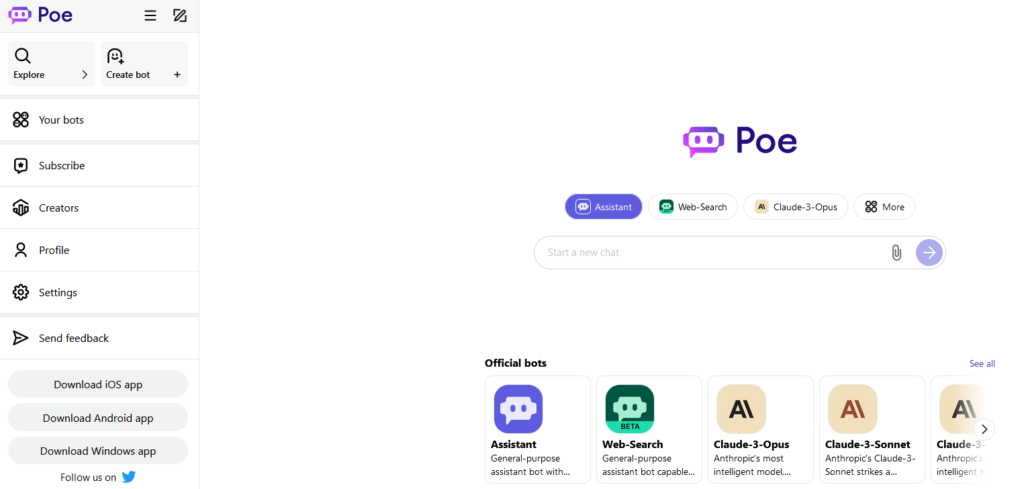
Poe, introduced by Quora in early 2023, transcends the realm of traditional AI chatbots, positioning itself as a dynamic platform for engaging with a diverse array of AI bots. Aptly named the ‘Platform for Open Exploration,’ Poe provides users with a gateway to interact with and experiment with various AI chatbots, offering a rich and immersive experience.
At its core, Poe serves as a hub where users can pose questions, receive instant responses, and engage in interactive conversations with a multitude of AI-powered bots. The platform’s sleek interface and intuitive design facilitate seamless communication, enabling users to effortlessly navigate through a multitude of AI chatbot options.
Poe’s repertoire of AI bots includes familiar names such as Sage, ChatGPT, Dragonfly, GPT-4, Claude 2, Gemini Pro, Mistral-Medium, and many more. With access to over 20 different Large Language Models (LLMs), Poe offers users a comprehensive selection of AI capabilities. However, access to certain models, such as GPT-4 and Claude 2, may require a subscription.
Contrary to misconceptions, Poe does not leverage Quora’s question-answer data. Instead, it serves as an independent platform dedicated to AI exploration, ensuring user privacy and data security.
With minimal downtime and impeccable performance, Poe delivers a seamless experience as users engage with a diverse range of AI bots. While account creation is necessary to access the platform, users benefit from the convenience of a single account across multiple services, streamlining the user experience.
For enthusiasts of AI chatbots like ChatGPT, Poe emerges as the ultimate solution a ‘one-stop platform’ offering unparalleled convenience and accessibility. By consolidating various AI models into a unified platform, Poe empowers users to embark on a journey of exploration and discovery, paving the way for immersive and transformative AI interactions.
In Conclusion
With companies pouring resources and expertise into the quest for AI supremacy, the landscape is ripe for the emergence of even more impressive alternatives to ChatGPT. As the evolution continues to unfold, why not dive into the delightful array of options we’ve curated on our list? Explore, experiment, and embrace the excitement of the AI revolution!
If you found this article interesting, you might also like to read: Unlocking the Power of ChatGPT: A Comprehensive Guide – Tips, Tricks & Prompts
